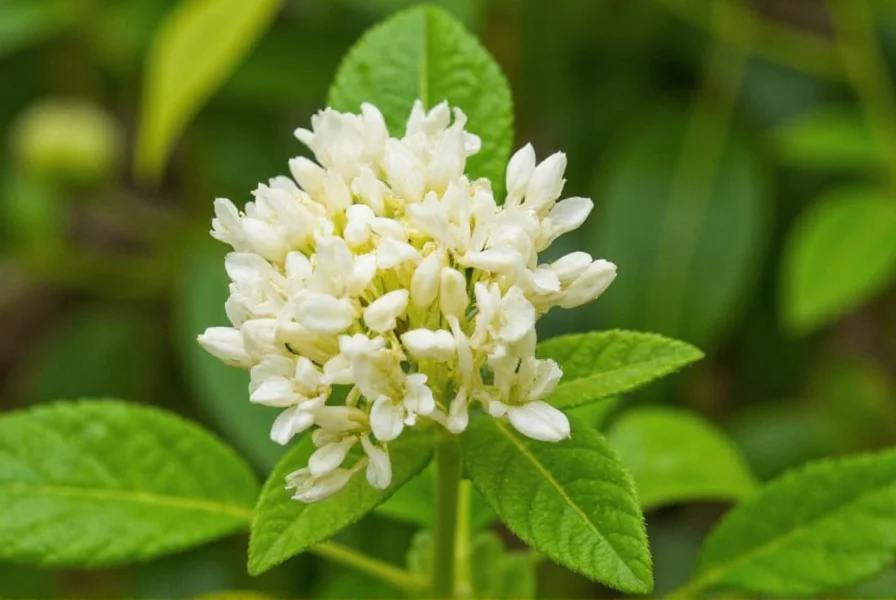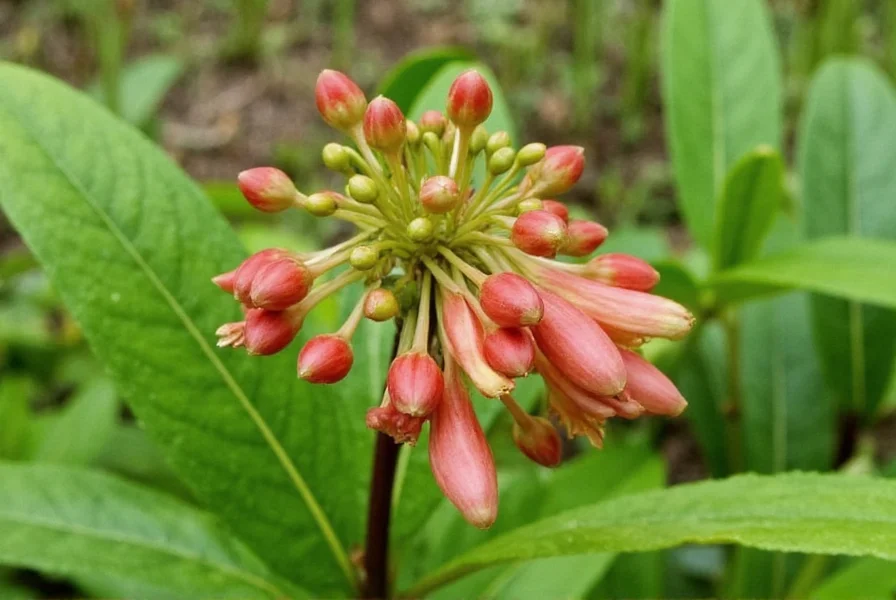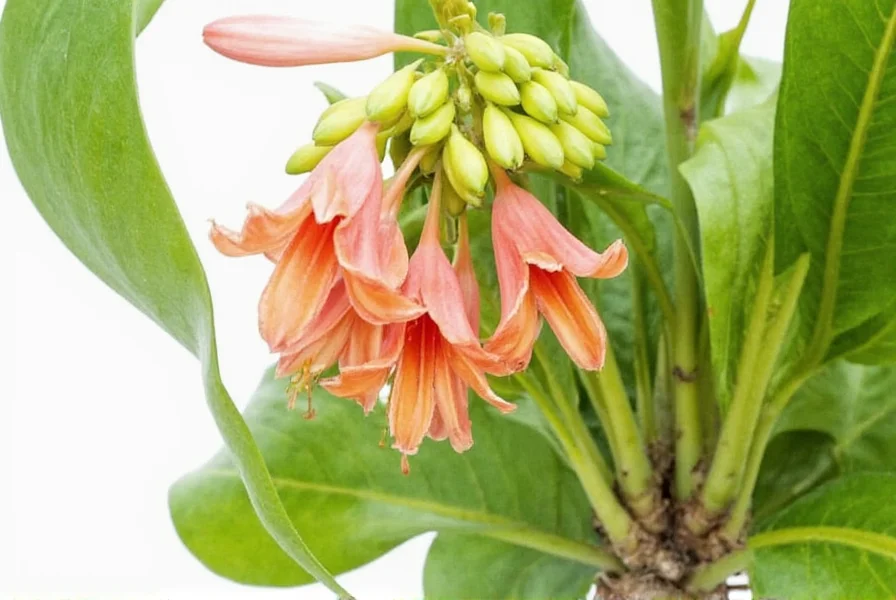Many people are surprised to learn that ginger plants produce flowers at all, since we typically encounter only the rhizome in grocery stores and kitchens. The flowering ginger plant presents a striking contrast to its culinary counterpart, with vibrant blooms that showcase the plant's botanical beauty.
Understanding Ginger Plant Flower Structure
Ginger flowers grow in dense clusters called inflorescences that emerge from a separate pseudostem distinct from the leafy growth. Each flower features:
- A tubular calyx that protects the developing bud
- Three delicate petal lobes forming the corolla
- Three similarly shaped but often differently colored sepals
- A prominent lip or labellum that serves as a landing platform for pollinators
- A single functional stamen with pollen-producing anthers
The most common cultivated ginger (Zingiber officinale) typically produces pale yellow flowers with purple markings, though color variations exist depending on the specific variety. The flowers emerge from a cone-like structure at the top of the flowering stem, gradually opening from the bottom upward.

Flowering Process and Growing Conditions
Ginger requires specific conditions to produce flowers, which explains why most commercial growers never see them. The flowering process follows this sequence:
- Rhizome activation: After planting, the rhizome develops roots and shoots
- Vegetative growth: The plant establishes leafy pseudostems (typically 2-4 feet tall)
- Flowering trigger: After 8-10 months in optimal conditions, a separate flowering stem emerges
- Bud development: The cone-like structure forms at the stem tip
- Blooming sequence: Flowers open progressively from bottom to top over several weeks
For successful ginger plant flowering, these conditions must be met:
| Condition | Requirement | Notes |
|---|---|---|
| Climate | Tropical or subtropical (USDA zones 9-12) | Frost kills ginger plants; requires 75-85°F temperatures |
| Light | Partial shade (dappled sunlight) | Full sun can scorch leaves; forest understory mimics natural habitat |
| Soil | Rich, well-draining, slightly acidic (pH 5.5-6.5) | Amend with organic matter; avoid waterlogged conditions |
| Moisture | Consistently moist but not soggy | Dry periods prevent flowering; mulch helps retain moisture |
| Maturity | 8-10 months of growth | Young plants rarely flower; requires established rhizome system |
Ginger Flower Varieties and Their Characteristics
While Zingiber officinale (common culinary ginger) produces relatively modest flowers, other members of the Zingiberaceae family create spectacular blooms:
- Butterfly ginger (Hedychium coronarium): Features fragrant white flowers resembling butterflies, often called white ginger lily
- Red ginger (Alpinia purpurata): Produces striking cone-shaped inflorescences in vibrant reds and pinks
- Shell ginger (Alpinia zerumbet): Displays pendulous yellow flowers with red spots that resemble seashells
- Blue ginger (Dichorisandra thyrsiflora): Though not a true ginger, produces stunning blue flowers
These ornamental gingers are often grown specifically for their flowers rather than their rhizomes, making them popular in tropical gardens and floral arrangements. The flowers typically last 1-2 days each, but the sequential blooming extends the overall flowering period.
Common Misconceptions About Ginger Flowers
Several misunderstandings persist about ginger plant flowering:
- Misconception: Ginger plants don't produce flowers
Reality: They do flower, but commercial cultivation focuses on rhizome production, which often suppresses flowering - Misconception: Ginger flowers are edible like the rhizome
Reality: While not toxic, most ginger flowers aren't particularly flavorful and aren't commonly used in cooking - Misconception: All ginger varieties produce the same flowers
Reality: Flower appearance varies significantly between species and cultivars - Misconception: Ginger flowers produce seeds readily
Reality: Most culinary ginger varieties are sterile and reproduce vegetatively through rhizomes
Practical Information for Gardeners
If you're interested in growing ginger for its flowers rather than its rhizome, consider these tips:
- Choose ornamental varieties like red ginger or butterfly ginger for more dramatic blooms
- Allow plants to mature for at least one full growing season before expecting flowers
- Avoid harvesting rhizomes if your goal is flowering, as this depletes energy reserves
- Provide consistent moisture, especially during flowering season
- Apply balanced fertilizer with higher phosphorus content to encourage blooming
- Protect plants from direct afternoon sun, which can damage delicate flowers
Ginger flowers typically appear during warm, humid months and may last several weeks with proper care. While the flowers themselves don't contribute to the culinary value of common ginger, they add significant ornamental value and demonstrate the plant's complete life cycle.

Conclusion
Understanding the flowering process of ginger plants reveals a dimension of this familiar spice that most consumers never experience. While commercial ginger production prioritizes rhizome development over flowering, gardeners in suitable climates can enjoy the beautiful blooms that represent ginger's complete botanical life cycle. The distinctive structure and vibrant colors of ginger flowers showcase nature's artistry beyond the kitchen spice rack, connecting us to the plant's tropical origins and ecological relationships.
Frequently Asked Questions
Do ginger plants produce flowers?
Yes, ginger plants (Zingiber officinale) do produce flowers, though they're rarely seen in commercial cultivation. The flowers grow on a separate spike from the leafy stem and typically display yellow, white, or pink blooms with purple accents. Flowering requires specific tropical conditions that most growers don't provide when cultivating ginger primarily for its rhizome.
Can you eat ginger flowers?
While ginger flowers are not toxic, they're generally not considered edible like the rhizome. Most culinary ginger varieties produce flowers with little flavor, and they're not commonly used in cooking. Some ornamental ginger species have flowers used in traditional medicine or as decorative elements, but they don't offer the distinctive spicy flavor of the ginger root.
Why don't grocery store ginger roots produce flowers?
Grocery store ginger roots typically don't produce flowers because they're harvested before reaching flowering maturity, often treated to prevent sprouting, and grown in conditions that prioritize rhizome development over flowering. Commercial ginger cultivation focuses on producing large, flavorful rhizomes, which requires different growing conditions than those needed to trigger flowering. Additionally, many store-bought ginger roots come from varieties specifically selected for culinary use rather than ornamental flowering.
How long does it take for a ginger plant to flower?
Ginger plants typically require 8-10 months of growth under optimal conditions before they produce flowers. The plant must first establish a robust root system and leafy growth before diverting energy to flowering. In tropical climates where ginger grows naturally, flowering usually occurs during warm, humid months. When grown in less ideal conditions or when cultivated primarily for rhizome production, ginger may never flower.
What conditions are needed for ginger to flower?
For ginger to flower, it requires tropical or subtropical conditions (USDA zones 9-12) with temperatures between 75-85°F, partial shade (dappled sunlight), rich well-draining slightly acidic soil (pH 5.5-6.5), and consistently moist but not waterlogged conditions. The plant must be mature (8-10 months old) with an established rhizome system. Commercial growers often suppress flowering by harvesting rhizomes before maturity or by providing conditions that prioritize underground growth over reproductive development.











 浙公网安备
33010002000092号
浙公网安备
33010002000092号 浙B2-20120091-4
浙B2-20120091-4